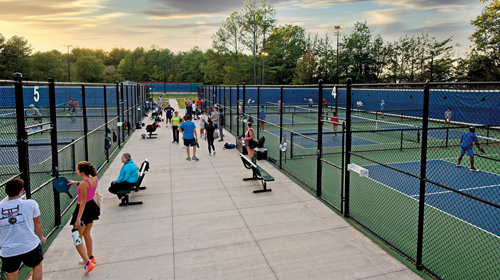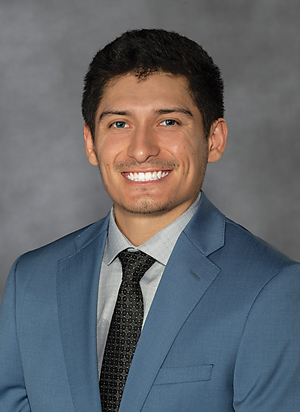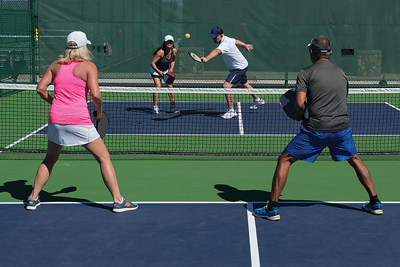During a summer vacation at the Jersey Shore years ago, my then-thirteen-year-old son returned from a day of solo exploration and told us about a game he had learned at the community center, thanks to a bunch of adults his grandparents’ ages: pickleball.
He had fun with the new activity – a mash-up of tennis, badminton, and ping-pong – and kept going back for more, not only that week but the following year when we made our annual shore pilgrimage.
Little did we know his experience was a harbinger of things to come.
Origin Story of Pickleball
Interestingly enough, it was another thirteen-year-old kid who spurred pickleball’s creation.
According to USA Pickleball, in 1965 Joel Pritchard and his friend Bill Bell created the game after being challenged by Pritchard’s thirteen-year-old son, who complained of boredom. Pritchard and Bell went to the Pritchard’s badminton court, taking with them ping-pong paddles and a whiffle ball. They lowered the net, which made it easier to get the lightweight ball over, and formulated rules. Joel’s wife Joan contributed the name, a reference to the random assortment of rowers who are gathered to fill what’s known as a pickle boat after other crews have been assembled. The thinking was that her family’s new game had the same kind of haphazard energy.
Slowly, pickleball spread, traveling from the West Coast eastward. In 1976, Tennis Magazine wrote about “America’s newest racquet sport,” and the first known pickleball tournament in the world was held in Washington State (where the game originated), with players who were primarily college-aged. As the sport advanced, it mostly took hold with people fifty-five and older, drawn by the compact court size (about a quarter of the size of a tennis court), a de-emphasis on serving, and the preferred playing of doubles instead of singles.
 Courts began appearing in retirement communities and locales frequented by retirees or snowbirds, who carried it back to their hometowns. Now, pickleball is heralded as the fastest-growing sport in the nation, with 4.8 million players in the United States, a growth of nearly 40 percent in the last two years, according to research from the Sports and Fitness Industry Association, which produces an annual report tracking involvement in 120 sports, fitness, and recreation activities.
Courts began appearing in retirement communities and locales frequented by retirees or snowbirds, who carried it back to their hometowns. Now, pickleball is heralded as the fastest-growing sport in the nation, with 4.8 million players in the United States, a growth of nearly 40 percent in the last two years, according to research from the Sports and Fitness Industry Association, which produces an annual report tracking involvement in 120 sports, fitness, and recreation activities.
The buzz around pickleball grows louder by the day, with steady coverage by mainstream media: New York Times, Washington Post, Los Angeles Times, The New Yorker, GQ, ABC, CNN, NBC, and NPR. Major League Pickleball, which in 2023 will expand from twelve to sixteen teams in six U.S. cities, is attracting big-name owners, including NBA players LeBron James, Draymond Green, and Kevin Love, professional tennis player James Blake, and retired NFL quarterback Drew Brees, who has purchased a stake in an Austin, Texas, team. Singer Maren Morris is another celebrity who has shared her enthusiasm for the sport, telling Pickleball Magazine how she played pickleball with her band and crew during her 2022 summer tour. She even had custom paddles, with her tour’s branding, made for everyone to use.
 Growing Pickleball Locally
Growing Pickleball Locally
“If you come from a racquet sport, pickleball is easy to learn,” says Lynn Dillon, USA Pickleball’s ambassador for Hanover County. “The hardest part of the game is keeping score.”
While pickleball often gains new fans by word of mouth, participation is also fostered by volunteer ambassadors, recruited by USA Pickleball, whose job is to offer instruction, establish locations for play, and encourage people to pick up a paddle.

“This is both a family sport and an individual sport,” Dillon says, noting that she taught her eleven-year-old and fourteen-year-old nephews to play at a family reunion last summer. “They had never played, and they can beat me now. But even if I don’t have a partner, I can walk up to a court and play.”
A retired P.E. teacher, Dillon took up pickleball nearly a decade ago in Danville when her husband, who had a terminal illness, encouraged her to do something physical for herself. She took a class with the local Parks and Recreation department and was hooked.
“It was good stress reduction,” Dillon says, noting that in addition to the game being easy to learn, it helps people find community. “It’s good for exercise and social interaction.”
Linda Scott and her husband Dave learned to play pickleball in The Villages, Florida, and began playing when they traveled to Myrtle Beach and Hilton Head. When they relocated to Chesterfield in 2010, Dave got permission from Parks and Recreation to tape pickleball court lines on existing tennis courts at Rockwood Park – believed to be the first pickleball courts in the region.
“The tennis people would come in and rip the tape off as soon as we left,” Scott says. “Dave and I are both tennis players, so we understood where they were coming from. We tried to explain that you can play both sports, not give up one for the other.”
In the beginning, there were twelve people who came to play regularly, Scott says – six of whom were her relatives. But that soon changed.
“Everybody who played invited other people, and we were shameless: We would invite people walking through the park,” she says. “It got so big, we went to Parks and Rec and asked for permanent lines.”
The approach to Chesterfield County Parks and Recreation went well, Scott says, because her group came ready to counter the notion that pickleball was a passing fad.
“We could tell what was happening all over the country,” Scott says. “We came with usage statistics, and we had $11,000 in pledges from members.” Later, the group donated an additional $30,000 to county coffers in support of the fledgling sport.
Neil Luther, Chesterfield’s Parks and Recreation director, agrees that the group’s persistence and preparation made a difference. “We were an early adapter to the [pickleball] wave,” he says. “They did bring money to the table. We were early because we had that partnership.”
Where to Play Pickleball
Chesterfield’s first eight courts went in at the Chesterfield Career and Technical Center on Hull Street. That location has since expanded to twelve courts; there are also eight courts in Rockwood Park on Courthouse Road and six courts at Harry G. Daniel Park at Iron Bridge on Whitepine Road. Thanks to feedback from users, last fall Chesterfield County converted several tennis courts for pickleball: R. Garland Dodd Park at Point of Rocks on Enon Church Road added eight new pickleball courts, and Huguenot Park on Robious Road gained six more courts. The pre-existing Rockwood courts were also renovated and reopened with new surfacing, lights, and nets, Luther says, pointing to pickleball’s universal appeal.
“It pulls a lot of folks who have played court sports before, but there are a lot of people who are coming to it who have never played sports before,” Luther says. “It’s easier than other sports to pick up very quickly.”

Aaron Reidmiller, now director of Hanover County’s Parks and Recreation department, implemented pickleball programming in Henrico County as a program coordinator early in his career. In 2011, when the Virginia Senior Games were held in Henrico, Reidmiller recalls, “we had to brush up very quickly” on the sport. As pickleball was gaining traction in Chesterfield, Reidmiller realized there was a need in Henrico, so classes launched at Deep Run Recreation Center, later expanding to the Eastern Recreation Center. Reidmiller himself also taught a pickleball course at Reynolds Community College in 2013.
“It’s amazing how the sport has grown,” Reidmiller says, attributing much of pickleball’s spread to an inviting atmosphere. “The community itself is very welcoming; I’ve never seen a player be turned away. Even at the most competitive tournaments, it’s not cut-throat. You see very much the same level of camaraderie and community.”
Currently, Hanover has four outdoor pickleball courts at Pole Green Park that were built specifically for that purpose. The county is also in the final stages of design for a new Montpelier Recreation Center and Library, scheduled to open in 2024, which will include a full gymnasium with three indoor pickleball courts. Indoor courts are also available at Cool Spring Baptist Church, where users pay a $3 daily or a $10 monthly fee.
In Henrico, Pouncey Tract Park on Pouncey Tract Road has twelve outdoor lighted courts with twelve additional courts planned (this is a change from the print article due to an editing error). The Springs Recreation Center on Lee Avenue has eight courts, and Sandston Memorial Recreation Center on J B Finley Road has two lighted courts. For indoor play, Deep Run Recreation center has three courts, and Eastern Henrico Recreation Center has four. The JCC also has indoor pickleball play for a fee.
Hazel Lewis, the Eastern Henrico ambassador for USA Pickleball, began playing seven years ago, primarily inside. “I don’t like to deal with the weather, and I have [springtime] allergies,” she says, noting that she primarily plays at Eastern Henrico Recreation Center. But, she adds, play moved outside during the pandemic. “In the summer, we played in the early morning or in the evenings, when it was cooler.”
Lewis is advocating for lights to be added to the courts at The Springs, a former country club location that Henrico County now owns, and to have pickleball included in the P.E. curriculum in Henrico County Public Schools. Both Chesterfield and Hanover already offer this instruction. “Kids need to know about this sport,” she says.
The city of Richmond first built and opened courts in 2017 and now has eighteen outdoor courts in various locations. While there are no Richmond-run indoor courts, RVA Pickleball, managed by USA Pickleball ambassador Diana Garland, will play inside on courts that are taped for pickleball use. Tamara Jenkins, public information officer for the city’s division of parks, recreation, and community facilities, says the city frequently hears from residents who are looking for additional courts.
How to Play Pickleball
While Garland agrees that pickleball players of all skill levels are often welcome at open-play sessions, she notes that some locations have set times and courts for different skill levels. Garland advises new players to study not only the moves, which are different from tennis, but also the rules, which include when it’s okay to be in “the kitchen” – the area that extends seven feet from both sides of the net – and how to keep score, which takes into account not only which team has the most points, but which team member is serving.
Every locality has some pickleball instruction, and schedules vary. Private instruction is also available, sometimes for a fee. That concerns Mike Roberts, who served for nine years as ambassador for Western Henrico, because he thinks one of pickleball’s strengths has historically been illustrated in players’ willingness to teach others, without expectation of payment.
“In the beginning, if you were good, there were only a few people for you to play with, so [stronger players] worked hard to bring others up to a higher level,” he says. “Now, people don’t want to play with others who aren’t as good [as they are]. I say, there’s always another game,” with a nod to the rookies who are out there hoping for help.
Roberts learned to play nearly fifteen years ago from a former tennis pro at a summer campground in Gloucester County. He went on to organize tournaments and teach throughout the region, including in Charlottesville, New Kent, King William, and elsewhere. He’s not playing as much now and says some of the people he taught won’t play with him. “I’m not good enough for them,” he laughs.
Like Roberts, Chesterfield pickleball enthusiast Scott has taught thousands of people how to play the game over the years, she says. As USA Pickleball district ambassador for Central Virginia, she’s happy to see an increase in learning opportunities throughout the region.
“I want people to learn this game,” she says. “I’ve had people tell me how life-changing it is. I’ve had people tell me they’ve lost a loved one, and [pickleball] gave them a place to be with people who cared about them. It’s been a mission for me. Everybody’s invited. We are inclusive of every level and type of person. We just get together and have a great time.”
Playing Pickleball Smart
Of course, as with any physical activity, injuries can happen. Chesterfield Parks and Rec’s Luther, a competitive tennis player, ruptured his Achilles tendon on a pickleball court years ago. “It was an interesting summer,” he says.
Scott says that most of the injuries she sees are due to overuse, acknowledging that age is certainly a factor in injury. “Young people fall, and they bounce,” she says. “Older people fall and they break.”

Nico Chavez, who teaches in VCU’s department of kinesiology and health sciences, is working toward a doctorate in rehabilitation and movement science with an emphasis in exercise physiology. He says he understands why people are drawn to pickleball. “It’s definitely a great alternative to some … more complex sports,” he says. “It doesn’t require as much physical prowess as something like tennis, where you’re running around a huge court. It’s easy to get out and start doing it with family and friends.”
But, he says, people should be thoughtful. “Pickleball does require some aerobic endurance, it requires some balance, and some reaction time,” he says. “The big thing is agility and mobility because lateral movement can be
hard on the joints for those who aren’t accustomed to physical activity.”
Overall, the game does lend itself to easy entry. “That’s the great thing about pickleball – you can start slow and make sure you’re safe and you understand how your body moves and reacts and how your body progresses,” Chavez says. “You can play pickleball with as much energy as you want.”
And, Chavez adds, injury can happen to anyone, anywhere, and anytime. “If you’re sitting on the couch all day, there’s zero risk of injury, but it’s not good for your overall health,” he says. “We know movement is one of the best things you can do for your body. Pickleball falls on the safe side of the [sports] spectrum because it keeps you at that moderate intensity level, which is really good for cardiovascular health. And it’s social … with a very loving community.”
According to the Sports and Fitness Industry Association, in 2021, 232.6 million U.S. residents participated in a sport of any kind, the highest involvement since 2016. Chavez notes that for the greatest return, people need to mix it up.
“Variety of exercise requires you to adapt and maintain the benefits longer,” he says. “As long as you keep changing your routine – maybe you run, then you play pickleball, then spike ball – that constant variety provides the stimulus and stress to the body to allow you to maintain those results over the long term.”
Play doesn’t have to drop along with falling temperatures. Richmond’s moderate climate, coupled with heat that radiates upward from hard court surfaces, makes it possible for year-round recreation.
In Chesterfield County, open-play shifts from morning to afternoon for the winter months, and the courts remain open from five to eight o’clock for those who have a traditional work day. “We laughingly call that polar bear pickleball,” Scott says, noting that the lost and found boxes at the court quickly fill with clothing items shed during matches. “You’d be surprised how fast your body warms up when you start to play,” she adds.
For Scott, as well as many others, pickleball has become a big part of their lives.
“When I hear that ball bounce – it’s a sound like popcorn popping – it makes me want to pick up my paddle and play,” she says. “I think it brings us back to our childhood, where you could just play with your friends. With pickleball, you don’t have to come with a partner. You can come late or leave early. You just show up and put your paddle on the rack.”





